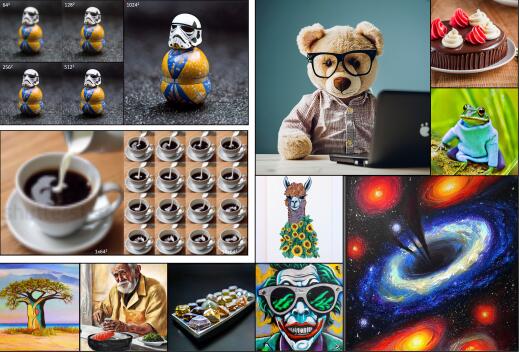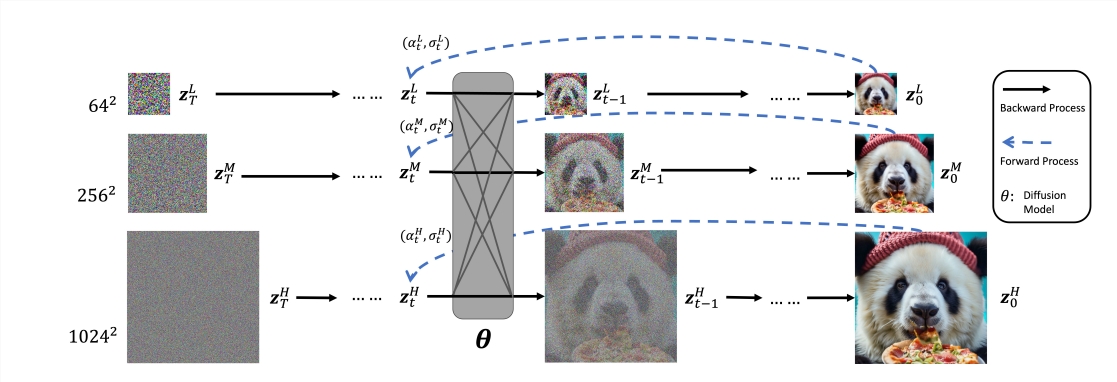Recently, the tech giant Apple Inc. has once again demonstrated its formidable capacity for technological innovation by introducing a novel image and video generation method known as Matryoshka Diffusion Models (MDM), a groundbreaking technology aptly dubbed the "Russian Doll Diffusion Model."
The name MDM draws inspiration from the Russian Matryoshka dolls, a clever nomenclature that not only imbues a sense of whimsy but also encapsulates its core technological philosophy—nesting smaller structures within larger ones. Similar to how each Matryoshka contains a smaller yet equally intricate doll, MDM can process images simultaneously across various resolutions, enabling seamless generation from low-resolution sketches to high-resolution details.

The charm of this innovative method lies in its ability to handle multiple resolutions of image processing concurrently. Imagine a group of skilled artists, each focusing on different areas of the canvas yet working in harmony to create a masterpiece of exquisite craftsmanship. MDM employs joint denoising across multiple resolutions, enriching the generated image details and enhancing realism, significantly elevating the overall quality of the images.
The core architecture of MDM is known as NestedUNet, further reinforcing the "Russian Doll" concept. In this architecture, each layer contains a smaller yet fully functional substructure, akin to each doll within the set. This unique design allows MDM to leverage high-level features and parameters effectively when processing small-scale inputs, facilitating a more efficient learning and generation process.

Currently, high-quality image and video generation models face significant computational and optimization challenges. Traditional methods either generate pixel-by-pixel or train a compressed image model before processing at lower resolutions. In contrast, MDM's training process resembles gradually teaching a child to walk, progressing from tentative steps to a confident stride. It employs a progressive training method, starting from low resolutions and gradually transitioning to high resolutions, making the model more stable and efficient when faced with new high-resolution images.

Apple's research team has showcased MDM's formidable capabilities through a series of benchmark tests. Whether in class-conditional image generation or text-to-image, text-to-video conversion applications, MDM has demonstrated exceptional performance. Notably, even when trained on the CC12M dataset with only 12 million pixels, MDM exhibited remarkable zero-shot generalization capabilities, meaning it can perform well in unseen scenarios.
Research results indicate that MDM can generate images up to 1024x1024 pixels in resolution, and even under relatively limited data conditions, it can accomplish tasks excellently, producing high-quality images that meet requirements. This feature greatly expands the application scope of AI image generation technology, bringing new possibilities to creative industries, design fields, and more.
Although MDM has already achieved remarkable accomplishments in the field of image and video generation, this may just be the tip of the iceberg. Future versions of MDM are expected to become even more intelligent, capable of understanding more complex contextual information and generating more realistic and diverse content. We can anticipate that this technology will play a significant role in virtual reality, augmented reality, film production, game development, and other fields.
Apple's introduction of the "Russian Doll Diffusion Model" technology undoubtedly brings a refreshing wave of innovation to the AI image generation field. It not only enhances the efficiency and quality of image generation but also points the way for the industry's development. With continuous improvements and deeper applications of the technology, we have reason to believe that MDM will play an increasingly important role in the digital creative world of the future, delivering more astonishing visual experiences.
Project page: https://top.aibase.com/tool/ml-mdm
Paper: https://arxiv.org/pdf/2310.15111









